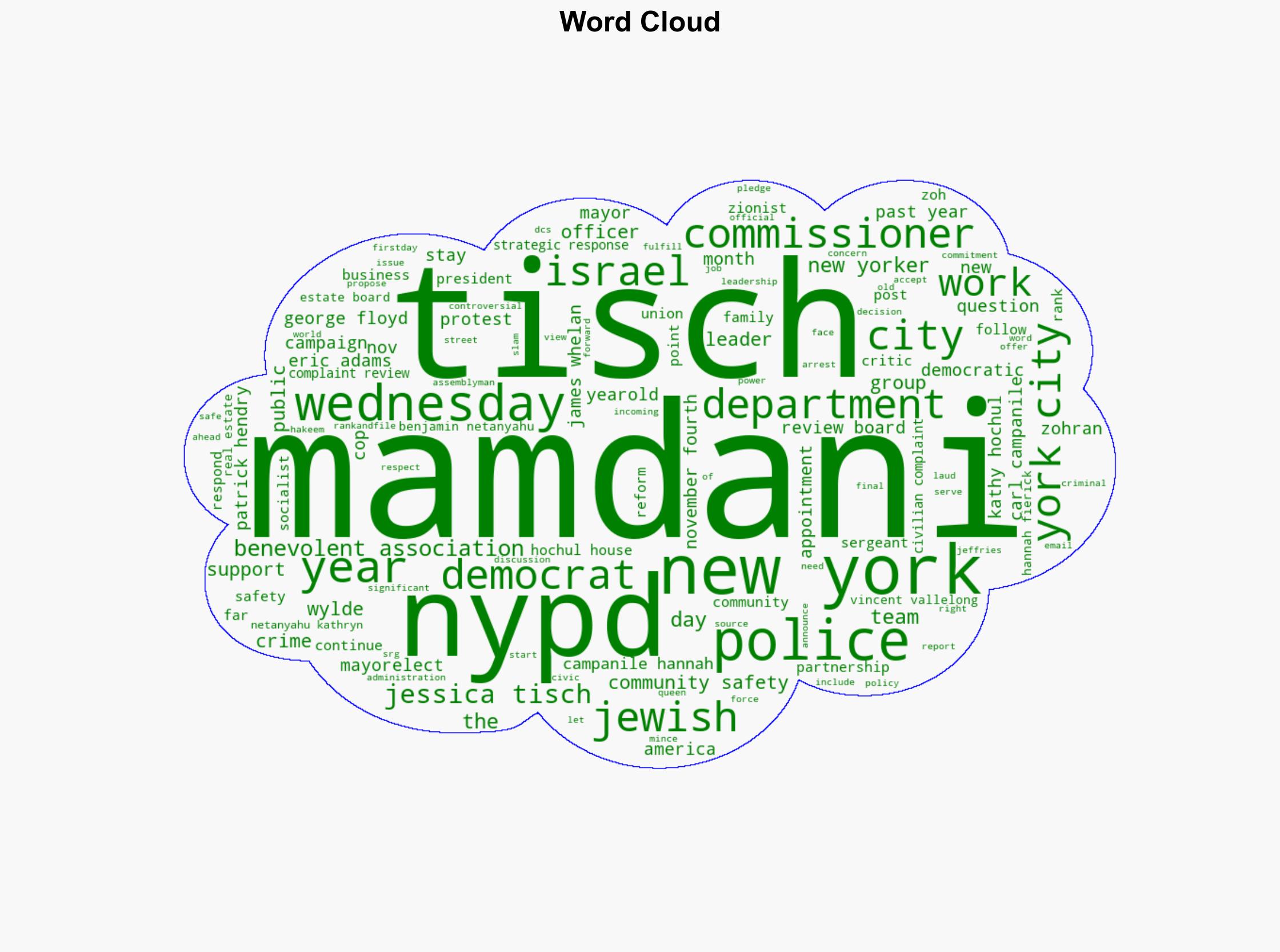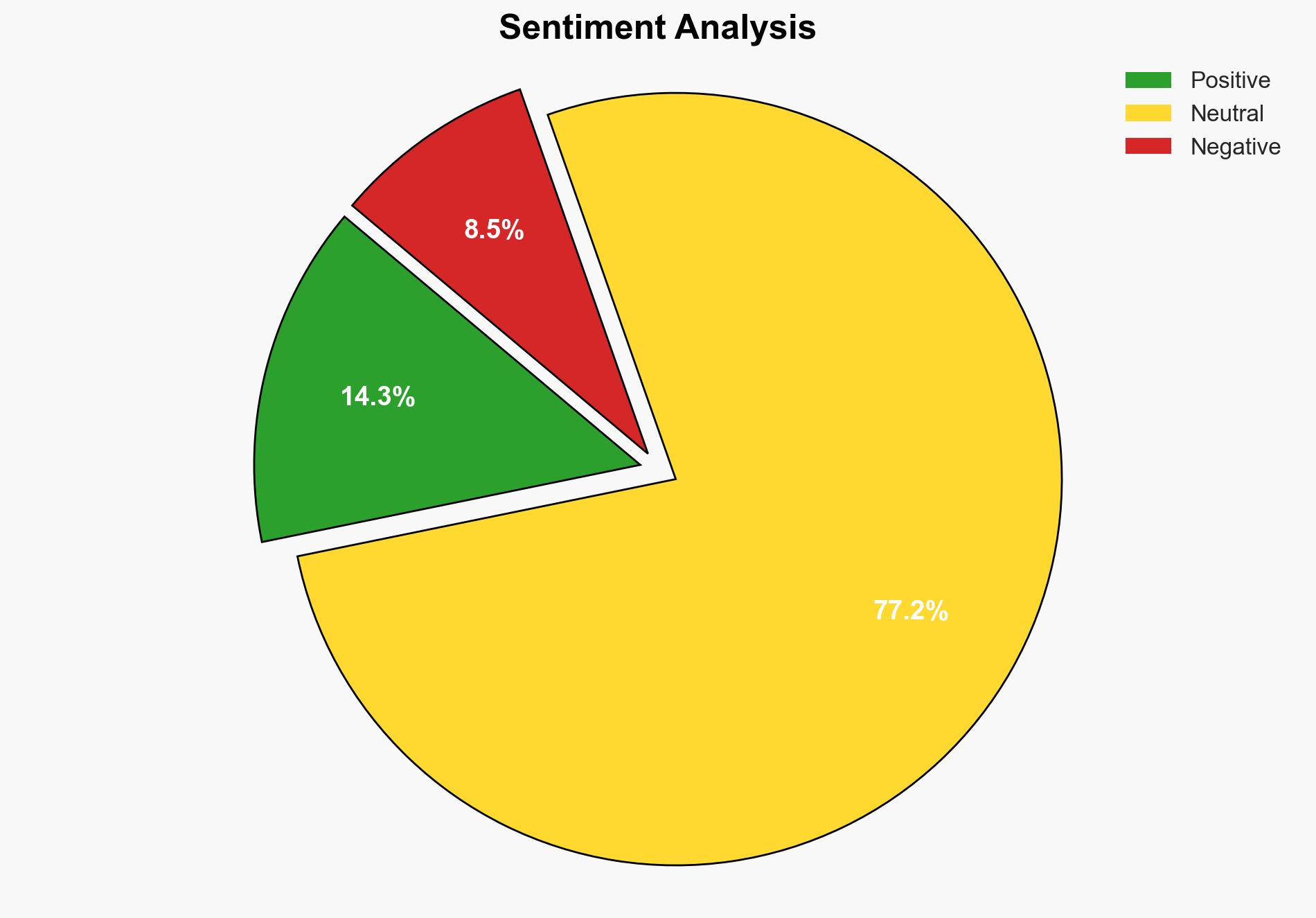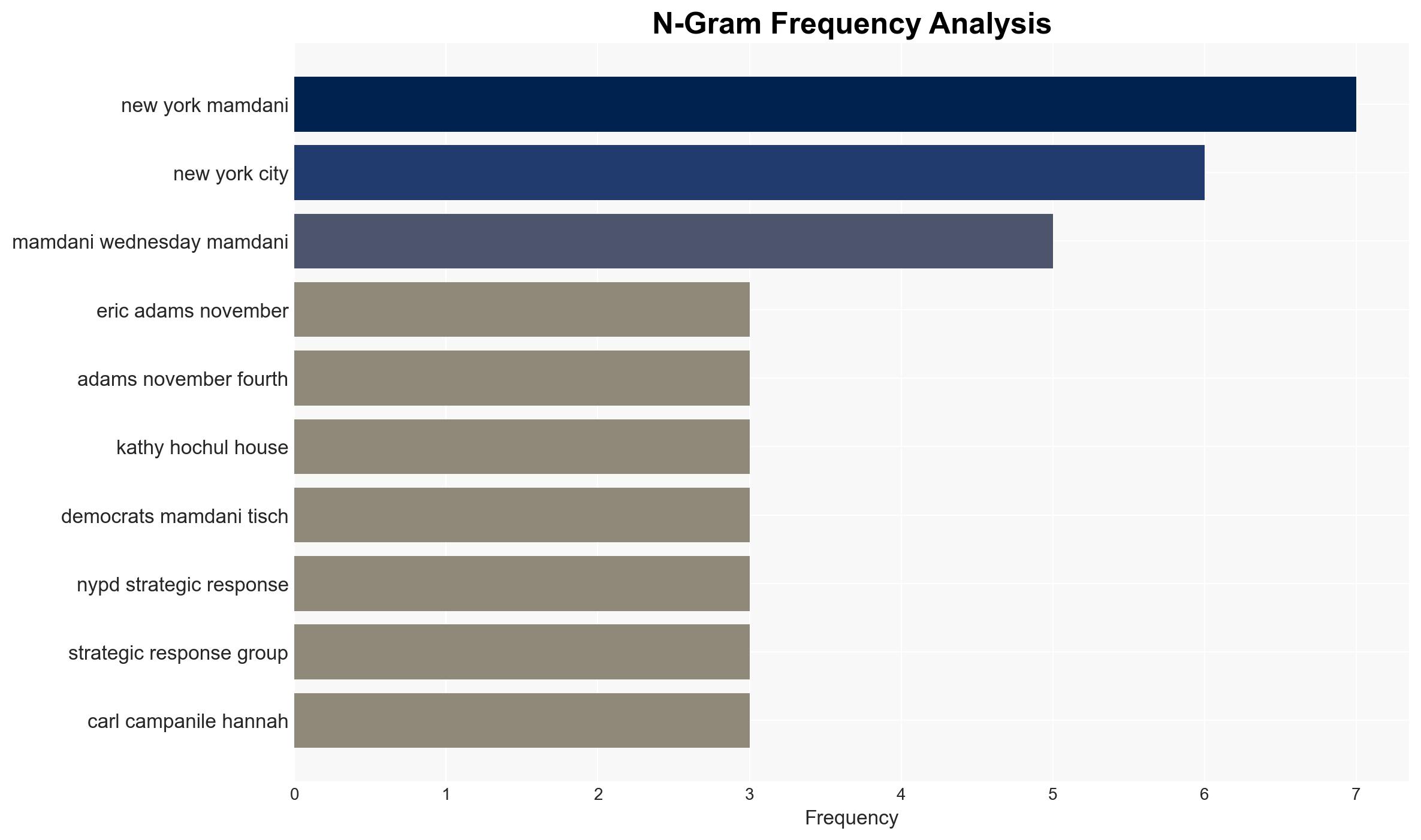NYPD Commissioner Jessica Tisch accepts Mayor-elect Zohran Mamdanis offer to stay as top cop – New York Post
Published on: 2025-11-19
AI-powered OSINT brief from verified open sources. Automated NLP signal extraction with human verification. See our Methodology and Why WorldWideWatchers.
Intelligence Report:
1. BLUF (Bottom Line Up Front)
The strategic judgment is that the appointment of Jessica Tisch as NYPD Commissioner under Mayor-elect Zohran Mamdani is a pragmatic decision aimed at balancing public safety with progressive reforms. The most supported hypothesis is that this alliance will maintain stability within the NYPD while cautiously advancing Mamdani’s reform agenda. Confidence level: Moderate. Recommended action: Monitor the implementation of reforms and public safety metrics to assess the effectiveness of this partnership.
2. Competing Hypotheses
Hypothesis 1: The appointment of Jessica Tisch is a strategic move by Mayor-elect Mamdani to ensure continuity in public safety while gradually introducing progressive reforms. Tisch’s experience and reputation for reducing crime will provide stability and credibility to Mamdani’s administration.
Hypothesis 2: The appointment is a superficial gesture to placate both progressive and establishment factions, with little intention of enacting significant reforms. The underlying tensions between Tisch’s traditional law enforcement approach and Mamdani’s progressive agenda may lead to conflicts and policy stagnation.
The first hypothesis is more likely due to Tisch’s proven track record in crime reduction and Mamdani’s need to demonstrate effective governance. However, the potential for conflict remains, given their differing ideological stances.
3. Key Assumptions and Red Flags
Assumptions: It is assumed that both Tisch and Mamdani are committed to finding common ground on public safety issues. It is also assumed that Mamdani’s administration will allow Tisch operational autonomy.
Red Flags: The ideological differences between Tisch and Mamdani could lead to public disagreements, undermining the administration’s cohesion. Additionally, Mamdani’s past support for defunding the police may create skepticism within the NYPD ranks.
4. Implications and Strategic Risks
The alliance between Tisch and Mamdani could stabilize public safety in the short term but may face challenges if progressive reforms are perceived as undermining law enforcement effectiveness. Political risks include potential backlash from both progressive supporters and law enforcement personnel. Economic implications could arise if crime rates affect business confidence and investment in New York City. Informational risks involve the potential for misinformation or misinterpretation of policy changes, affecting public perception.
5. Recommendations and Outlook
- Monitor public safety metrics and community feedback to gauge the effectiveness of the partnership.
- Facilitate open communication between Tisch and Mamdani to preemptively address potential conflicts.
- Engage with community leaders and stakeholders to build support for reforms.
- Best-case scenario: Successful integration of progressive reforms with effective law enforcement, leading to improved public safety and community relations.
- Worst-case scenario: Policy gridlock and public disagreements lead to increased crime rates and diminished public trust.
- Most-likely scenario: Gradual implementation of reforms with ongoing negotiations between Tisch and Mamdani, maintaining a balance between safety and reform.
6. Key Individuals and Entities
Jessica Tisch, Zohran Mamdani, Kathy Hochul, Hakeem Jeffries
7. Thematic Tags
Cybersecurity, Public Safety, Police Reform, Political Strategy, Governance
Structured Analytic Techniques Applied
- Adversarial Threat Simulation: Model and simulate actions of cyber adversaries to anticipate vulnerabilities and improve resilience.
- Indicators Development: Detect and monitor behavioral or technical anomalies across systems for early threat detection.
- Bayesian Scenario Modeling: Quantify uncertainty and predict cyberattack pathways using probabilistic inference.
Explore more:
Cybersecurity Briefs ·
Daily Summary ·
Support us





